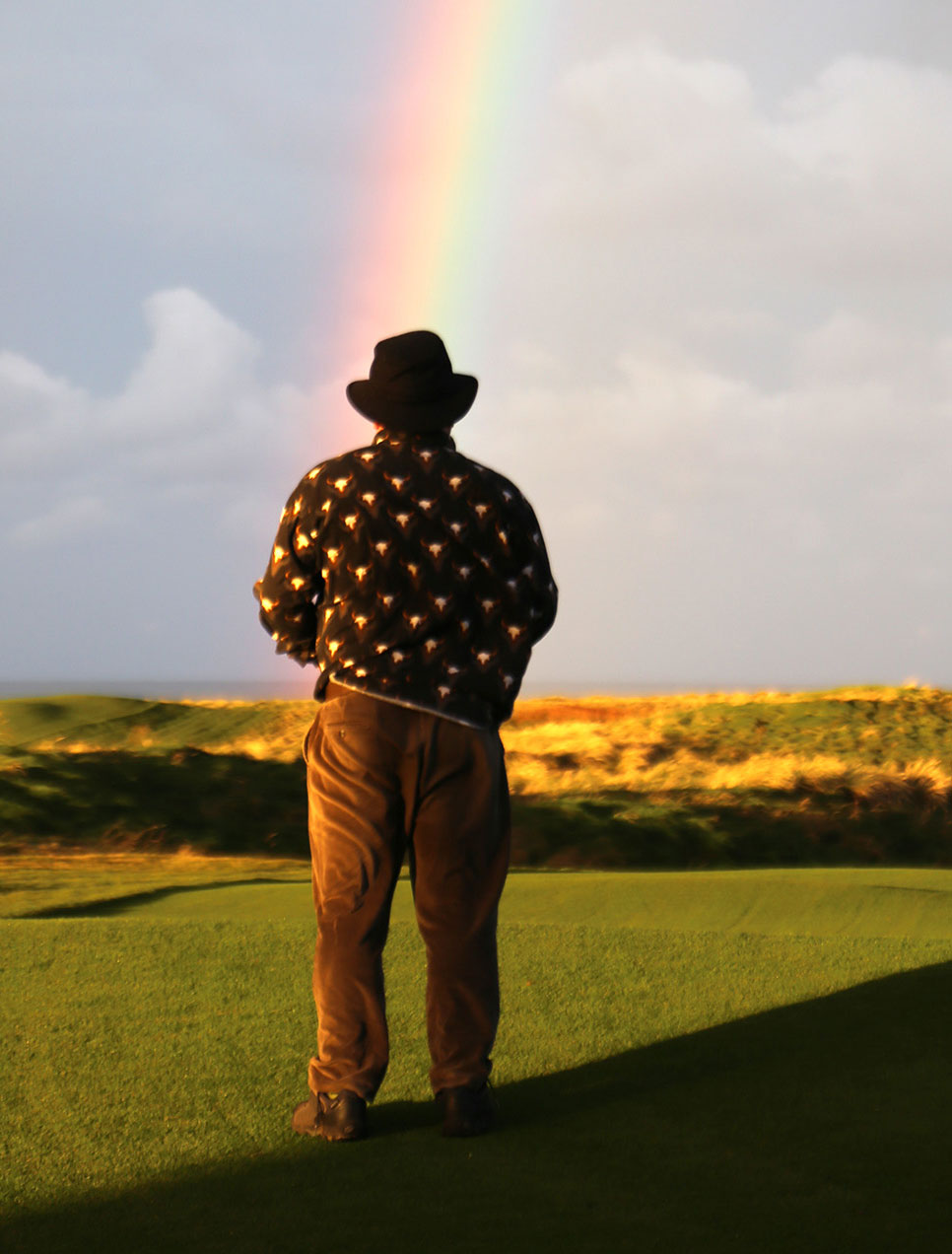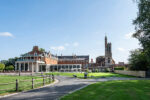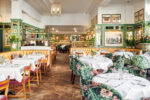The UK’s Smallest City: St Davids & Twr Ye Felin Hotel – Travel Review

By Kevin Pilley, November 2025
Up Goat Street, down Gospel Street and up Herol Fawer High Street, round Nun Street and back down to the cathedral: a sub-40-minute tour of the UK’s smallest city is possible.
That depends on how long you spend in the FatFace, wetsuit and surfers’ shops, how lengthy the queue is for your Celtic Crunch ice cream, how tempted you are by The Bishops’ scenic beer garden – and how distracted you are by estate agents’ windows.
And, basically, on how pious you are feeling; how mesmerised you get looking at stained-glass windows, fourteenth-century pulpitums and, generally, how interested you are in arcaded parapets and oak misericordia, or “mercy seats”, depicting pigs in headdresses and foxes in cowls.
“Ancient”
The St David’s peninsula of Pembrokeshire is a place of screeching seabirds, soaring cliffs, fierce seas, wind-bent hawthorn hedges, lichened stone walls, headlands including the promontory of the Eight Perils, drowned valleys, misty moors from where the blue stones of Stonehenge came, mermaid haunts, pigs’ ears, dinosaur, dragon and crocodile-back silhouettes, Silurian rockscapes, lighthouses (such as Strumble Head), basking pinnipeds (grey seals), mythical bleeding yew trees, pilgrim kneeling places and fun facts.
Like: King Edward I owned one of St David’s arms, King Henry II got his falcons from Ramsay and actor Christian Bale was born in Haverfordwest.
But ancient Dewsland or Dewisland also has beaches (the sandy Whitesands and shaley Newgale) as well as healing wells, Iron Age hill forts, Bronze Age cairns, Neolithic burial chambers (Pentre Ifan was the first scheduled ancient monument in Wales), Britain’s first bird observatory (on nearby Skokholm Island), slate workings, potato fields, pubs like the 250-year-old Ship Inn at Trefin and the 1743 Sloop Inn at Porthgain, and the UK’s first insect restaurant (Grub Kitchen), serving bug burgers and mixed insect pakoras.
“Beautiful setting”
The most westerly county in Wales also has Wales’s first contemporary art hotel.
Formerly a windmill, Twr Ye Felin (meaning “Mill Tower” in Welsh) became a temperance hotel in 1904 and, after a major redevelopment, reopened in 2015 as Wales’s first contemporary art hotel. It now has 39 rooms, including two suites, and over 200 pieces of commissioned art by artists from 17 countries, and gives “Croeso Cynnes Cymreig” (the warmest of Welsh welcomes).
The passion project of Hong Kong-based architect and hotelier Keith Griffiths, it is part of west Wales’s Retreats Group, which comprises the 8-room 1884 vicarage B&B, Penhriw Hotel, and Roch Castle Hotel, one of the few inhabited twelfth-century castles and one of the twelve Landsker Line lookouts built to keep south Wales safe from the heathen north.
It stands on some of the oldest rock on earth and its sunroom looks out over the Preseli Hills and the St Brides Bay. Its honesty bar makes it an even more beautiful setting.
“Viper bite”
Every room is a Welsh history lesson.
The Ap Gruffydd Room is named after the Welsh prince Rhys ap Gruffydd (also known as the Lord Rhys), who ruled over the Kingdom of Deheubarth in the 12th century and fought the Normans. His tomb is in St David’s Cathedral.
The De Rupe Room is named after the castle’s original Latin name, “de Rupe”, which means “of the rock”. The first known inhabitant of the castle was a Norman knight by the name of Adam de Rupe, who thought he was safe from snakes there but died of a viper bite. The Lucy Walter Room is named as a mistress of King Charles II of England. Lucy was born in Roch Castle, which was also used as a hideaway by Prime Minister David Lloyd George.
St Brides is named after the nearby village of St Brides and an early Christian saint and abbess in Ireland. The Nest Room is named after Nest ferch Rhys, who was a Welsh princess in the 12th century. She was renowned for her beauty and was abducted by the Norman knight Owain ap Cadwgan. One of the books in the castle’s library describes her as a “high-born, prolific trollop”.
And, of course, there is also a St David’s Room, as well as a three-level bridal suite.
“Fleeting glimpses”
The artwork in all three hotels helps you explore Gwlad Hud a Lledrith – “the land of mystery and enchantment”. It celebrates Welsh national heroes as much as the Welsh landscape. In Twr Ye Felin, you will meet Sir Tom Jones, Sir Anthony Hopkins and Dame Shirley Bassey down its corridors, and will have fleeting glimpses of Katherine Jenkins and Catherine Zeta Jones hanging from the walls.
All the public spaces and bedrooms (with their Aroma Associates toiletries and Philippe Starck bathrooms) are decorated with the works of the likes of Zoe Taylor, Sarah Shaw, Harry Adams, Lynda Marwood, Grahame Hurd-Wood and the hedonistic, Dylan Thomas-inspired self-portrait “windscreens” of Bridgend’s Cherry Pickles, entitled “Sometimes I drink too much but mostly I can’t” and “When I nearly got merry”.
Parts of the restaurant are “Pure Evil”.
You have breakfast, lunch and dinner in the company of Elizabeth Taylor, as painted by Welsh street artist Charles Uzell-Edwards (aka Pure Evil).
Even a short stay leaves you with an appreciation of the spray-paint art scene, evanescent light, structure and composition, as well as humankind’s transitoriness beside the immutability of the natural world. You learn that art can be a form of worship.
“Monastic community”
Eglwys Gadeiriol Tyddewi, a ten-minute walk down the hill from the hotel, is the cathedral that has given the 2,000-strong population of tiny St David’s its city status. The Gothic-Romanesque rebuild is on the site of the early sixth-century Glyn Rhosyn monastic community founded by the teetotal vegan prelate and Bishop of Mynyw, whose first biographer was an eleventh-century Norman cleric.
David was canonised in 1120 and, after being declared a shrine, St David’s became the major site of pilgrimage of medieval Christendom. Two visits were considered equivalent to one to Rome and three to Jerusalem.
St David’s Day (Dydd Gŵyl Dewi Sant) commemorates the day of the saint’s death, 1 March 589. The day has been celebrated since the 12th century.
Llanddewi Brefi (“holy place of oxen bellows”) in Ceredigion was the scene of one of St David’s miracles, where he made a hill rise up underneath him so more could see and hear him preach.
David was called Aquaticus and his monks known as “the watermen”, as they used to stand in the sea for hours as penance. You should too if you commit the unpardonable sin of missing choral evensong or the Sunday service, followed by refreshments with the bishop. The cathedral choir was the first to be made up of men and girls.
“Landing site”
Another short walk away are the ruins of St Non’s chapel, reputedly the birthplace of the patron saint of Wales. There is also a 1934 chapel. His mother, Non or Nonnita, was a nun, now thought to be buried in Brittany, who was allegedly raped by King Sanctus of Ceredigion. David was brought up at Henfynyw near Aberaeron.
The north Pembrokeshire (ancient Pebidiog) coast was also the scene of the last invasion of Britain. In February 1797, as part of the War of the First Coalition, when Revolutionary French soldiers (mainly convicts) sought to destabilise Britain and supported the United Irishmen in Ireland, a diversionary force heading to attack Bristol landed at Carregwastad and occupied the Llanwnda peninsula for three days. They were under the command of an American chef de brigade, Colonel William Tate of South Carolina.
After the Battle of Fishguard (the village was later to become the West Wales ferry terminal to Ireland and the location for the filming of the Moby Dick and Under Milk Wood movies), he surrendered on Goodwick Sands, having been tricked into believing local women dressed in traditional whittle shawls were redcoat soldiers.
In 1876, Abercastle was the landing site of the first west-to-east single-handed Atlantic Ocean crossing, made by Denmark-born Alfred Jonson in his 21’ sailing dory, “Centennial”. They left from Gloucester, Massachusetts. The journey lasted from 15 June – 12 August.
In the mid-nineteenth century, Solva, another sheltered harbour in Pembrokeshire a few miles from St Davids, was the embarkation point of the “Cradle” packet to New York. It took over forty days; the fare was £3, but no food was supplied. You had to bring your own.
“Sublime”
If the service was in operation today, it would undoubtedly have ice, so I would take some of the wonderful liver-and-onions pies from Solva’s friendly Hats and Barrels pub, as well as local Losh’s pasties and oggies, the delicious mushrooms and moreish chocolate croissants served at breakfast at Roch Castle, and try to persuade Twr Ye Felin’s Ukrainian chef Dan Slipakiv and sous-chef Sophie Craig to accompany me.
Saint David taught us: “Be joyful. Keep the faith and do the little things” – “Gwnewch y pethau bychain mewn bywyd”.
I interpret this, after staying in St Davids with the Retreats Group, as including the Blas (Welsh for “taste”) Restaurant mash, mulled prune purée, salsify écrasé, smoked chestnut and venison loins.
And the whole dessert menu. Especially the small but sublime spiced apple mille-feuille, vanilla and nutmeg custard, caramelised puff pastry and almond ice cream.
Plus a week’s worth of Welsh caviar (laver bread) and artisanal Perl Wen and Celtic Promise cheeses.
And a few bottles of Cary-A-Mo kelpchup.
The local chillied crickets I could do without.
More info:
twryfelinhotel.com
rochcastle.com
retreat-group.com
visitpembrokeshire.com
FAQs – St Davids travel guide
Why is St Davids classed as a city?
City status stems from its cathedral. It was recognised in the 12th century, lost in 1886 and restored in 1994 – hence the UK’s smallest city by population.
What is the cathedral called?
St Davids Cathedral – a Gothic–Romanesque masterpiece set in a valley 10 minutes’ walk from the centre.
How long does a quick walking circuit take?
Allow around 30–40 minutes – up Goat Street, along the tiny centre and down to the cathedral – longer if stopping at shops, galleries or viewpoints.
What are the must-see coastal spots nearby?
Whitesands Bay for sands and surf, St Justinian for lifeboat views, Ramsey Island boat trips, Newgale for sweeping shingle, and Strumble Head lighthouse.
Where can visitors stay with an art focus?
Twr y Felin Hotel – Wales’s first contemporary art hotel – with commissioned works throughout; sister properties are Roch Castle and Penrhiw.
Is Roch Castle worth a detour?
Yes – a 12th-century hilltop castle with panoramas over St Brides Bay – noted for tranquil lounges and an honesty bar.
Any local food tips?
Look for laverbread “Welsh caviar”, artisan cheeses like Perl Wen and Celtic Promise, and seasonal menus at Blas Restaurant – desserts are a highlight.
When is choral worship held?
Evensong and Sunday services run in term time – check the cathedral schedule. Visitors are welcome – modest dress and quiet during services are advised.
Best time of year to visit?
Spring for wildflowers and migrating seabirds, summer for beaches and boat trips, autumn for dramatic seas and quieter paths, winter for storm-watching.
Are there good short walks from the centre?
Yes – St Non’s Chapel and well on the coast path; Porthclais harbour loop; hill to Carn Llidi for views over Ramsey Sound.
Can wildlife be seen from shore?
Regular sightings include grey seals (autumn pupping), porpoises and seasonal seabirds – always keep distance and follow cliff-edge safety signs.
What about the “last invasion of Britain” story?
In 1797 a French force landed near Fishguard – local lore and sites around Goodwick and Fishguard recount the brief campaign and surrender.
Is St Davids suitable for families?
Yes – safe central streets, beaches within a short drive, RNLI heritage, easy coastal sections – always supervise children near cliffs and water.
Do visitors need a car?
Helpful for beaches and headlands, but local buses link St Davids with Haverfordwest, Fishguard and key bays in season – taxis fill the gaps.
Any etiquette for the art hotels?
Treat corridors like galleries – no flash photography, don’t touch artworks, and book dining in advance during busy weeks.
How is “St Davids” written locally?
Both “St Davids” and “St David’s” are seen – the city, council and cathedral commonly use “St Davids”. The Welsh name is Tyddewi.
What should be packed for the coast?
Layers, waterproofs, sturdy footwear, sun protection, binoculars – and cash or card for cafés at remote bays.
Where to find official visitor information?
Visit Pembrokeshire for maps and transport, plus the individual sites – Twr y Felin, Roch Castle and Penrhiw – for stays and dining.















